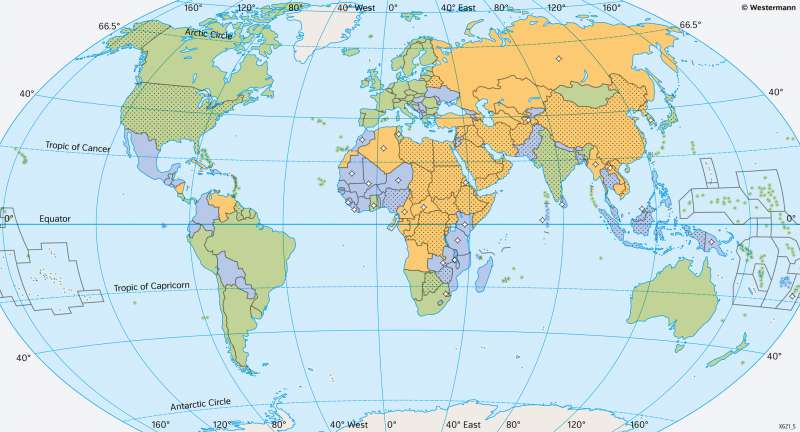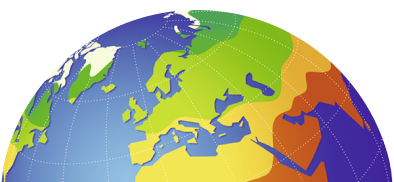The World - Human rights
Human rights and migration
978-3-14-100890-6 | Page 38 | Ill. 1

Overview
On December 10, 1948, the member states of the United Nations agreed on the Universal Declaration of Human Rights. Today, most democratic constitutions refer to the Declaration. Nevertheless, critical views also exist. This is often justified by the accusation that universal human rights are a product of the "Western order. In particular, autocratically governed countries oppose a restriction of the sovereignty of the state by private rights of the individual.
Selected excerpts
The "Universal Declaration of Human Rights" of the United Nations from 1948 is a non-binding basic document consisting of 30 articles. Examples are:
- Article 2 describes the prohibition of discrimination: "Everyone is entitled to the rights and freedoms set forth in this Declaration without distinction of any kind, such as race, colour, sex, language, religion, political or other opinion, national or social origin, property, birth or other status. Furthermore, no distinction shall be made on the basis of the political, legal or international status of the country or territory to which a person belongs [...]."
- Article 5 prohibits torture: "No one shall be subjected to torture or to cruel, inhuman or degrading treatment or punishment."
Human rights in the Western world
In Europe, America and Australia/New Zealand, human rights are protected or at least partially protected in most states. In these regions of the world, the situation is comparatively good. Russia, Kazakhstan and Belarus are exceptions. The death penalty is only applied in a few countries here, for example in the USA. However, this should not hide the fact that there are major problems in numerous countries. For example, armed units in the service of drug cartels in certain regions of Central and South America have pushed the government back so far that it can practically no longer exercise any power there. Violence against dissidents - for example, small farmers who oppose certain large-scale projects or human rights activists - is very common in such regions.
moreHuman rights in Africa
Africa is characterised by the fact that human rights are only protected in very few countries. In large parts of the continent, the situation is extremely problematic. There too - as in Asia - the use of the death penalty is widespread.
Unequal human rights conditions
However, the rights described in the articles cannot be enforced under international law. Therefore, the Declaration is not binding. In addition to states in which human rights are respected and in particular political rights and civil liberties are protected (40 per cent of the world's population live in such states) there are therefore also numerous states in which this is only partially the case or not at all (around 60 per cent of the world's population live in such states). In the map, these categories are represented by three colours. Another factor that can be used to assess compliance with human rights is whether or not the death penalty is applied in a country. This is represented in the map by a pattern.
Human rights in Asia
In Asia, the situation is very heterogeneous. Sub-regions in which human rights are protected contrast with large areas in which they are not. These include populous and economically strong countries such as China, Russia or the oil states in the Persian Gulf. The fact that there are only a few countries with partially protected rights, for example Pakistan and Malaysia, shows the great contrasts within the continent. Often, the disregard for human rights goes hand in hand with civil wars and armed conflicts - a major cause of the strong refugee migration, especially in West Asia. The use of the death penalty is particularly widespread in Asia.




